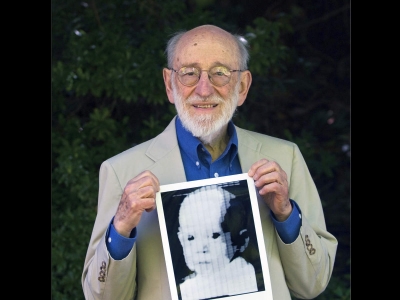
American computer scientist Russell Kirsch revolutionised digital images with his invention of the pixel and then the world’s first digital photograph. He is also recognized as the developer of the first digital image scanner. Pixels are digital dots used to display photos, videos and more on phone and computer screens. In 1957 Kirsch created 2×2-inch, 172 x 172 pixel image of his baby son. Using a device he created at the U.S. National Bureau of Standards, this was the first image ever scanned into a computer and was made up of just 31,000 pixels (the latest iPhone captures images containing 12 million pixels). Kirsch made his pixels square which meant that image elements were not as smooth as real life, giving rise to them “pixelated”. Kirsch’s discovery laid the groundwork for digital photography, satellite imagery, CT scans, barcodes, virtual reality, and more. 91-year-old Kirsch passed away in August 2020 in Oregon (USA).
Kirsch later developed a method to smooth out images by using pixels with variable shapes instead of the squares. Initially, the images were binary, capturing only black or white, but Kirsch and his team discovered that by scanning the image multiple times at different thresholds they could create a grayscale image by stacking multiple scans, as per DPreview.
This technology allowed Kirsch and his team to develop algorithms that laid the foundations for image processing and image pattern recognition. Kirsch’s invention also helped NASA with its earliest space explorations, including the Apollo Moon landings.
Picture Credit : Google
